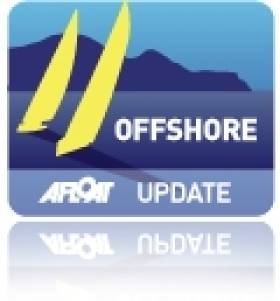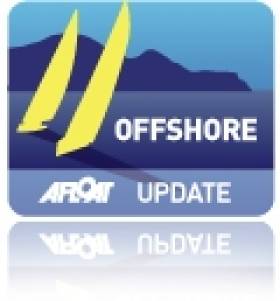Displaying items by tag: Microtransat Challenge
#Sailbot - The Canadian engineers behind the latest robotic boat challenger to cross the Atlantic unaided have told The Sunday Times' Gabrielle Monaghan about their hopes for the project this summer.
As previously reported on Afloat.ie, the team from the University of British Columbia will put their 'sailboat' to sea from Newfoundland in August, bound for Ireland in the latest attempt at the Microtransat Challenge.
No previous attempt has been able "to even cross the halfway point," said UBC Sailbot team co-captain Kristoffer Vik Hansen.
But reaching Fenit - which stepped into the breach when previous destination Dingle proved a no-go due to tourist traffic - would be the dream come true for the 66-strong team of students bringing together the complementary disciplines of engineering and computer science.
Indeed, it would also mark a retracing of the route of St Brendan the Navigator's legendary voyage from that Co Kerry town to Newfoundland some 1,500 years ago.
Robot Sailing Team Preps For Canada-to-Dingle Transatlantic Challenge
#Robots - Engineering students in Vancouver are hard at work prepping their challenger for the title of first boat to cross the Atlantic completely unmanned.
As reported on Afloat.ie last October, the robotic sailboat team at the University of British Columbia put out a call for assistance from any marina along Ireland's Wild Atlantic Way willing to be their destination port for their attempt at the Microtransat Challenge.
And now they have a finalised route that will take them from St John's in Newfoundland to Dingle in Co Kerry – a journey of three weeks and 2,900 kilometres.
But as the Comox Valley Record reports, they've only got till August to get their 5.5m sailbot ship-shape.
That involves installing a hodge-podge of robo-tech driven by solar panels and a network of sensors and GPS receivers to keep the as-yet-unnamed vessel both on course and away from any obstacles that might arise - whether bad weather systems, fishing boats, shipping lanes or random debris.
"It's not some kind of lab where everything's tip-top shape," says Kristoffer Vik Hansen, co-captain of the UBC sailboat team, of the improvised nature of their pioneering project. "You're working with real nature; you're sailing on the ocean."
The Comox Valley Record has more on the story HERE.
Robot Sailing Team Calls For Help From West Coast Marinas
#Sailbots - The University of British Columbia's robotic sailboat team is looking for help from marinas on the West Coast as they make plans for next year's Microtransat Challenge.
The Canadian engineering students have taken first place two years running in the World Robotic Sailing Championship, which this year was held in Galway Harbour and hosted by NUI Galway.
But the holy grail of robotic sailing is the Microtransat Challenge, the competition to design and build a fully autonomous sea-going vessel under 4m long and capable of crossing the Atlantic unaided.
The first attempt at the challenge, launched by scientists from Aberystwyth University in Wales, ended in failure as the robotic yacht disappeared after reversing course.
UBC Sailbots intend to be more successful in setting their robo-boat to sea from Newfoundland in eastern Canada to Ireland, one of two sanctioned routes for the challenge.
But they need assistance from a willing marina along the Wild Atlantic Way to provide accommodation for team members, a place to pick up their boat and a support vessel to shadow their boat to the finish line.
Any interested parties can contact the team via their website at ubcsailbot.org.


























































